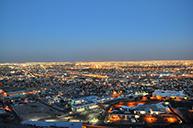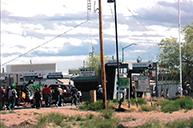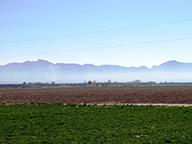TX-NM-CHIH Workgroup | Overview
- R6 Home
- Texas-New Mexico-Chihuahua
Regional Workgroup - Texas-Tamaulipas-Nuevo León-Coahuila
Regional Workgroup
Workgroup Overview: Texas-New Mexico-Chihuahua Region
The Texas-New Mexico-Chihuahua region stretches approximately 500 miles (800 km) along the international boundary from the Coronado National Forest to Big Bend National Park and includes the following major sister cities: Columbus-Palomas, Las Cruces-El Paso-Ciudad Juárez, and Presidio-Ojinaga. (Map) This region is a part of the Chihuahua Desert ecosystem that primarily comprises of arid to semi-arid biotic communities and is home to the second largest metropolitan area along the U.S.-Mexico Border known as the Paso del Norte region. The Paso del Norte region defined by the area made up of two countries, three states and three major cities with a population of more than two million residents, share the same limited environmental resources.
Federal, state and tribal partners from the U.S. and Mexico serve as the co-chairs of the TX/NM/CHIH Regional Workgroup (RWG). The co-chairs support local Task Force efforts and coordinate activities at the regional and local levels. Among other responsibilities, co-chairs encourage open dialogue and public participation, leverage resources to achieve program goals, help ensure concrete measurable results, and recommend issues beyond regional scope to be addressed by the Policy Fora-US EPA-El Paso Border Office staff, together with program partners, helps coordinate the TX/NM/CHIH RWG activities and reports to ensure transparency and timely access to environmental information. The multiple task forces within the regional workgroup are the foundation of the RWG that encourage local decision-making, priority-setting and project implementation to solve the border region’s environmental problems.
The task forces help promote awareness and education on environmental issues, and coordinate efforts with community residents, governmental agencies, universities, and non-governmental/non-profit orgranizations (NGOs) on both sides of the border, in both the urban and rural communities.



